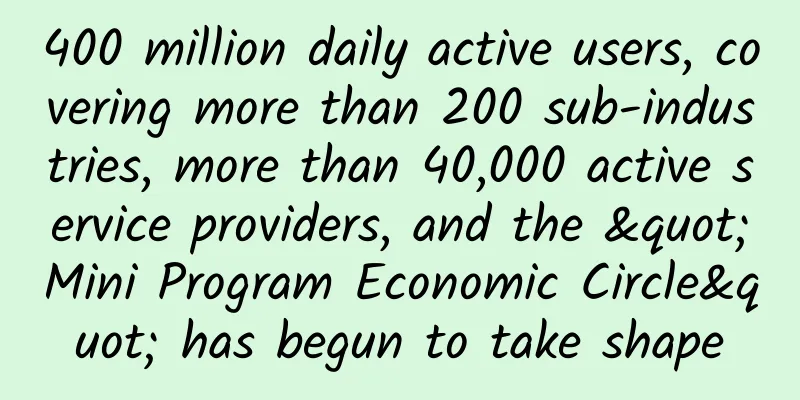A girl from Generation Y ventures into scientific research. Her findings are on your dining table!

|
"The '叶' of leaves and the '田' of fields, both '田' are the same." Ye Tiantian, an associate researcher at Xianghu Laboratory, always gives a brief self-introduction and smiles to everyone. Her image is very consistent with the general public's imagination of a "science girl": short hair, plaid shirt, and a shy smile on her face, but as long as she talks about science, her clear eyes will reveal her love, persistence and determination for the profession. She always said that her job was simple, and that she basically just looked at computers and data, like a hunter, to find genes related to good traits from billions of DNA base pairs. But in fact, these "simple" jobs can grow infinite vitality and weave a complex "genetic code". Ye Tiantian Full-time "gene hunter" Recently, concepts such as "Generation X, Y, and Z" have become popular on the Internet. People divide the 45 years from 1965 to 2010 into 15-year units and name the generations with English letters. In the media, the image of young people of "Generation Y and Z" is often associated with keywords such as "quick access to information", "diversity and openness", "individuality", and "focus on self-realization". The older generation also has high hopes for this, believing that they should be highly innovative, enterprising, and wantonly publicizing, but at the same time they should also be down-to-earth, bravely take on the responsibility, and shoulder social responsibilities. This is exactly the fundamental reason why this post-90s girl decided to enter Xianghu Laboratory. From the first day she entered scientific research, she had a simple yet grand idea of "doing something for society" in her heart. After seeing the official establishment of the tenth provincial laboratory in Zhejiang Province, Xianghu Laboratory, Ye Tiantian quietly made up her mind to return to her hometown, even though she was still far away in the United States at that time and had a year to graduate. In 2023, on the first anniversary of the establishment of Xianghu Laboratory, Ye Tiantian returned from his studies. Before being hired as the chief expert of Xianghu Laboratory, Gu Zhimin worked at Zhejiang Freshwater Fisheries Research Institute for 38 years and served as the director for 12 years. His research direction has always been around new species development, healthy breeding and other aspects. He has many students all over the world. However, this team leader praised Ye Tiantian after only meeting her a few times: "The girl is very down-to-earth and very capable! She studied in the Zhu Kezhen Qiushi Class of Zhejiang University, completed her undergraduate thesis at Harvard University, and then completed a master's degree in computer science and a doctorate in bioinformatics at the University of California, Riverside. We welcome such talents very much!" Xianghu Laboratory This "unique" agricultural laboratory in the province, which clearly displays the signboard of "morality, learning, practice and truth-seeking", is a perfect match for Ye Tiantian, who has been committed to combining informatics and agricultural research when he was a doctoral student at the University of California, Riverside. The three main directions proposed by Xianghu Laboratory, namely modern agricultural biotechnology, green, intelligent and efficient agricultural production technology, and agricultural product quality and life health, not only point out the direction for researchers, but also provide a stage for them to show their talents. "As long as the general direction is correct, we will never restrict the creativity of young people in specific details," the team leader said firmly. So, after officially joining the core seed creation team of freshwater aquaculture in Xianghu Laboratory, Ye Tiantian began to think about where her next "target" should be. During her doctoral studies, she specialized in data analysis of bioinformatics, and analyzed many objects: humans, mice, Arabidopsis, yeast... But after returning to China, she only wanted to work hard for the aquaculture industry in her hometown and domestic biological genetics work, and develop and verify better tools and methods. Before the development direction was settled, life choices continued to appear: just one week after Ye Tiantian received the offer letter from Xianghu Laboratory, Google also extended an olive branch to her. While she apologized without hesitation, she also suddenly realized a problem: returning to her original intention, one of the genes she most wanted to "hunt" was actually hidden in the Macrobrachium rosenbergii in Huzhou, her childhood hometown. "There is no special reason. It's just that this is a very common aquatic product. If you want the research to be 'useful', I think you must start with the 'common'." The disease resistance research work on Macrobrachium rosenbergii was carried out and the layout was started. Macrobrachium rosenbergii As we all know, understanding genes is the key to understanding and modifying organisms. However, Macrobrachium rosenbergii has more than 3 billion base pairs. It is not easy to screen out relevant genes that can improve breeding from the vast amount of genetic data. Not to mention that there are multiple sets of repeated fragments in the entire genome of shrimp, which makes sequencing and assembly even more difficult. But using computers to decipher the "genetic code" is exactly what Ye Tiantian does every day. "As long as we can accurately locate the specific genes that affect growth, we can use gene editing technology to 'knock out' or 'implant' the relevant gene fragments and improve the variety." She is very excited about the future. Fortunately, Ye Tiantian did not have to wait too long for such a "future". At present, the team has developed the world's first liquid-phase gene chip for Macrobrachium rosenbergii and Red Claw crayfish, successfully breaking the "bottleneck" technology in the agricultural field abroad. "With the help of the new liquid-phase gene chip, the breeding time of new aquatic varieties can be shortened by half, and the efficiency can be increased by more than 40%." The team leader said. What is more gratifying is that this method, called "whole gene breeding", is being continuously applied and promoted, and is expected to replace traditional breeding with longer cycles and greater uncertainty. Macrobrachium rosenbergii 100K cGPS high-precision liquid breeding gene chip “Her results determine your table” The consensus in the industry is that if no one insists on developing a new generation of breeding technology, relying solely on catching wild resources will not be able to meet the public's consumption needs and will also have a huge negative impact on natural resources. As a native of Jiangsu and Zhejiang, Ye Tiantian has long felt that the Culter alba, also known as "Taihu whitefish" and "silver knife", is usually a delicacy on the tables of people living near the lake. Because of its plump and delicate meat, it is known as "the freshest in the world". However, in recent years, due to overfishing, the number of wild fish has dropped sharply, and the price has continued to rise, making more and more people reluctant to buy it. Today, the price of this freshwater fish has dropped to half of what it used to be through artificial breeding. More and more people can enjoy this delicious food, and the improvement of breeding technology is directly reflected on your and my dining table. In order to further develop and expand the industrial chain of "gene chip technology - artificial breeding of seedlings - breeding", Ye Tiantian spends a lot of time reading literature after work. "We need to understand the latest algorithms and developments in the world, including the use of artificial intelligence to do genome-related content. The development speed is very fast, and we must follow these developments." In her opinion, artificial intelligence has been very advanced in the processing of natural language and dialogue with people, but it is still in the direction of exploring the application of genome. "The genome is very different from human language, so it cannot be copied and used, but we hope to use large models and artificial intelligence to train genome algorithms." She said. “I’m curious and want to explore the unknown, so I do scientific research!” In Ye Tiantian’s view, aquatic products are not only a “main dish” on the Chinese table, but its related disciplines are also a blue ocean with a lot of unknowns. “If one day we can predict gene function, we can use a large model to determine the efficiency of binding and editing between the target and the gene editing enzyme, so that we can screen suitable targets better and faster.” Based on her description of the future of smart agriculture, it is not difficult to read the energy, enthusiasm and expectations of this young girl. |
Recommend
A century of brand marketing history
Branding is a new discipline. If you count strict...
Insights into advertising media advertising trends in Q3 2021
As the current leaders in short video, Tik Tok an...
Discovery, location and solution of a BUG
Preface After the release of iOS 11, a series of ...
Wearable devices will trigger big data in science and technology ethics
The ethical issues of wearable devices are also f...
What are the functions of the Guangzhou check-in mini program? How to create a check-in app on WeChat?
A few days ago, a boss called me and wanted to mak...
Is the cotton bollworm also picky about food? The cotton bollworm: I don’t like to eat every leaf
Produced by: Science Popularization China Author:...
Eight open source free web screenshot/recording tools
In PPT presentations, academic research, web desi...
WeChat and Alipay have passwords, so why can a barcode scanner take away money directly?
How long has it been since you went to the bank t...
Android Network Security Configuration
[[198282]] The Network Security Configuration fea...
Analysis of NetEase Cloud’s operational logic!
Let me make a bold prediction. I feel that a new ...
Chifeng Mini Program Development Company, how much does it cost to develop a fishery mini program?
How much is the price for developing Chifeng aqua...
Baidu promotion information flow advertising display style - interact as you like!
Information flow advertising style - interactive ...
Fuli Business School·Fuli Short Video Creation Knowledge [Full Set]
Fuli Business School·Fuli Short Video Creation Kn...
Taking multivitamins actually increases mortality? We should stop taking them? This is a misunderstanding →
gossip “Does taking multivitamins increase mortal...
How to avoid fake influencers in overseas influencer marketing?
Influencer marketing is currently the main means ...









